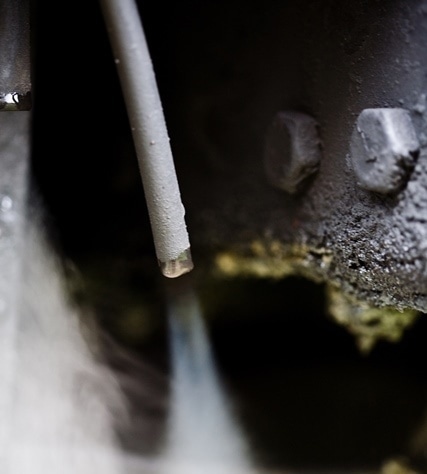By Kalwinder KaurJul 19 2013
Electrochemical gas sensors are gas detectors used for measuring the concentration of a target gas by oxidizing or reducing the gas at an electrode and measuring the resulting current. The first electrochemical sensors were developed in 1950s for monitoring oxygen.
By the mid-1980s, miniaturized electrochemical sensors came into existence for detecting various toxic gases. Currently, a wide range of electrochemical sensors are being used for various applications.
Construction
The sensor consists of two or three electrodes that are in contact with an electrolyte. The electrodes are made of porous hydrophobic membrane fixed with a high surface area precious metal.
The most commonly used electrolyte is a mineral acid. The electrodes are usually located in a plastic housing that consists of a gas entry hole and electrical contacts.
In some cases, a scrubber filter is also fixed in front of the sensor to filter unwanted gases. The most commonly used filter medium is an activated charcoal.

Image Credits: Photos.com
Working Principle
Electrochemical sensors are operated based on the diffusion of gas of interest into the sensor, which results in the production of an electrical signal that is proportional to the gas concentration.
Gas coming in contact with the sensor passes via a small capillary-type opening and diffuses via a hydrophobic barrier to reach the electrode surface. As a result, a sufficient amount of gas is allowed to react at the sensing electrode to produce a sufficient electrical signal. The diffused gas in turn gets oxidized or reduced at the sensing electrode.
With the help of resistor connected between the electrodes, the current flowing between the anode and cathode can be measured to determine the gas concentration.
Applications
Electrochemical sensors make use of minimal power for their operation. In fact, the power consumption of this sensor is the lowest of all gas monitoring sensors. For this reason, electrochemical sensors are widely used in confined space applications such as monitoring indoor air quality and gas leaks, and with portable instruments consisting of multiple sensors.
Sources and Further Reading
- Electrochemical sensors – International Sensor Technology
- Electrochemical Gas Sensors – SGX Sensortech
Disclaimer: The views expressed here are those of the author expressed in their private capacity and do not necessarily represent the views of AZoM.com Limited T/A AZoNetwork the owner and operator of this website. This disclaimer forms part of the Terms and conditions of use of this website.